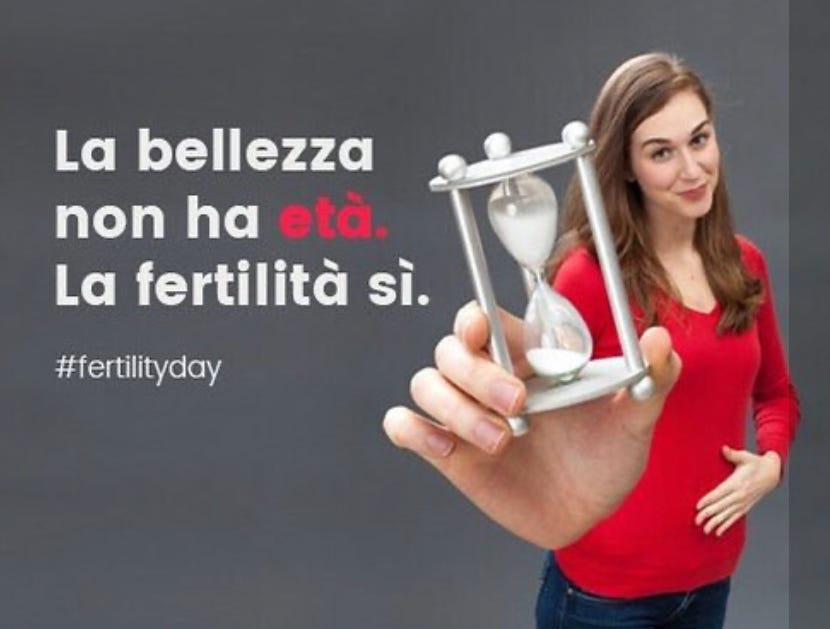A country on the cliff
Could Italy simply fade away? What 'The Dying City' can teach an aging nation
That Civita di Bagnoregio ranks high among Italy’s most beautiful villages may be the least surprising thing about it.
Stubbornly clinging to colorful cliffsides of layered volcanic tuff and sandstone and tethered to the rest of the world by a single umbilical cord of a footbridge, ancient Civita seems almost unreal. Like a mirage, a floating ochre-colored citadel.
Step through its oversized gate and the town doesn’t hum with life, it exhales it. Time stretches out between the tolls of the hourly church bells.
“In the early mornings or the evenings, the time when most of the tourists are gone, that’s when you can feel the weight of the town’s history,” Marco De Petrillo, a Civita resident, told me.
De Petrillo, 62, was born in Rome. But eight years ago, he and his wife Ilaria Rossi Doria moved to Civita to escape what he called “the chaos and stress” of the capital. They took over the sprawling three-story Palazzo Contino, which Ilaria’s archeologist grandfather bought in the 1970s, and now rent rooms to visitors. De Petrillo said the 16th-century structure is in constant need of maintenance.
“As soon as you finish work on one floor you have to start on the next one,” he said. “It never finishes.”
Civita was never a large town: at its peak, around 3,000 people called it home. But that was before a catastrophic earthquake shattered its fragile perch in 1695. Much of the town’s landmass slid into the valley below and severed its connection to nearby Bagnoregio. Since then, erosion and smaller tremors have steadily chipped away at what remains.
Today, the picturesque and precarious outcrop is barely a third its former size. Its population, according to De Petrillo, hovers around 15 permanent human residents -- all of them adults -- alongside a couple of dozen cats and two dogs. It’s been dubbed La Città Che Muore: The Dying City.
On shaky ground
In the 1920s, Italy was mostly rural and poor. The aftermath of World War I had unleashed inflation, unemployment, and social unrest that fueled a mass exodus as millions of Italians left for the U.S., Argentina, Australia, and beyond.
Those were big problems for Benito Mussolini, Italy’s new Fascist leader. For him, it was more than a crisis -- it was an obstacle to his plans to transform Italy into a modern global power.
Mussolini’s strategy to reshape the nation centered on four ambitious campaigns: the Battle for Grain (to reduce Italy’s reliance on food imports), the Battle for the Lira (to stabilize and strengthen the currency), the Battle for Land (to convert marshlands into productive farmland), and the Battle for Births (to reverse the country’s declining population).
He believed a larger population was essential to economic self-sufficiency and to increase military strength and international influence. The demographic goal was to increase the country’s population from 40 million in the 1920s to 60 million by 1950.
“War is to a man what fertility is to a woman,” Mussolini reportedly said. “It’s the highest fulfilment of one’s existence.”
The Battle for Births combined incentives and punishments.
Newlywed couples were offered state loans repayable by having children. “Prolific mothers” were given medals, cash prizes, household appliances, and praise in the media.
Women were pushed out of the workforce: state companies sacked females (except war widows) so they could stay home to raise children, and private companies that did the same were rewarded.
Meanwhile, married men with six or more children paid no income taxes, while the unmarried were penalized with a special “bachelor tax.”
In 1933, an article titled Toasty Females reported that a Neapolitan woman with 18 living children was showered with awards as Italy’s “most prolific mother” and was personally congratulated by Mussolini and Pope Pius XI.
But despite all that, Mussolini’s Battle for Births failed: Italy’s birth rate in 1925 was around 27 births per 1,000 residents, a figure that dipped to 23 births per 1,000 residents a decade later. By 1950, five years after Mussolini’s death, the country’s total population had climbed, but just to 46 million.
In fact, the country did not surpass Mussolini’s target of 60 million until 2013, and then it permanently fell below that level six years later. Last year marked the tenth consecutive year of population decline. The birth rate that was above 20 per 1,000 residents in the 1920s and ‘30s? It now stands at 7.
Making Italians
In his memoirs, writer and painter Massimo d’Azeglio -- one of modern Italy’s founding fathers -- famously wrote, “We have made Italy. Now we must make Italians.”
He was referring to the challenge of forging an Italian national identity from a territory divided by dialects and generations of threats and internal military clashes. But today, d’Azeglio’s 19th-century exhortation feels like a modern-day imperative.
Fertility rates are declining across the industrialized world, but Italy’s situation is especially stark. The country’s low birth rate translates to around 1.2 children per woman, among the lowest fertility rates in the world. A rate of 2.1 is required to keep a population stable.
But the situation in Italy is exacerbated by a “brain drain,” as many of the brightest young leave for better opportunities abroad, just as in the 1920s. A strong health care system has increased longevity, further shifting the balance toward pensioners and health care and away from investments in workers.
“The biggest problem with a falling fertility rate isn’t related to any specific economic area,” Maria Rita Testa, a professor of demography at LUISS University in Rome, told me. “The biggest problem is that it tears at the social fabric of a country.”
What does that mean for Italy?
“When there are fewer children, people become more materialistic, more hedonistic, more focused on careers, entertainment, travel,” she said. “There’s less altruism. Public policy becomes less forward-looking. The economy is weakened because there are fewer consumers and fewer workers, and because as workers age, they are less efficient and innovate less.”
Etched in stone
Italian leaders have long recognized the problem. But addressing it has been politically fraught.
In 2016, I covered then-Prime Minister Matteo Renzi’s tone-deaf launch of the country’s first “Fertility Day,” which urged women to have children earlier. “Beauty doesn’t have an age. Fertility does,” said one government ad. Another showed a long-beaked bird’s silhouette with the tag line, “Hurry up! Don’t wait for the stork!”
The initiative triggered a backlash accusing the government of sexism, condescension, and echoes of Mussolini. Renzi’s government collapsed three months later, and, though young -- Renzi is 50, near Italy’s median age -- he’s been a political afterthought since.
Now current Prime Minister Giorgia Meloni -- whose party descends from Mussolini’s Fascists -- has called fertility a “national emergency.” Italy’s first female head of government has proposed tax breaks and baby bonuses, extended parental leave, and state-funded nurseries. While she hasn’t revived the tax on bachelors, critics say casting childbearing as a civic duty recalls Mussolini-era rhetoric.

Meanwhile, Italy’s fertility and birth rates continue to fall, inching Italy toward a demographic cliff.
Civita di Bagnoregio is called La Città Che Muore because tremors and erosion have carried away its foundation. Italy, too, is weathering its own slow, quiet erosion -- not geological, but generational.
Yet Civita still stands, fragile but still alive. Whether Italy mirrors Civita’s decline or draws strength from its example of stubborn persistence is unwritten. But the warnings already seem to be etched in stone.
And another thing:
While almost every industrialized country is dealing with low fertility rates, combatting Italy’s near-record low rate is complicated by the Italian government’s increasingly tough anti-immigrant policies.
Most demographers say that parental leave and support for working mothers are the central parts of combating low fertility rates. But an appropriate policy on migration is also key.
Around the world, Canada (with a fertility rate of 1.4), Australia (1.5), Germany (1.5), the U.K. (1.5), Sweden (1.6), the U.S. (1.7), and France (1.8) have all managed -- at least until recently -- to maintain or increase their populations through immigration.
Italy began a dramatic clampdown on migration in 2018, which was also the first year where the country’s average daily deaths (1,721 at that time) was larger than average daily births (1,325) plus migrant arrivals (192). The gap has grown since then, as the Italian current government has pushed to have European countries adopt their own strict migrant stances.







Very interesting! Was talking about the whole notion of “fuga dei cervelli” just the other day but in relation to Sicily. Thank you for another illuminating read!
So much food for thought. And I’m feeling a little sad reading this. One thing that stuck with me is this
“When there are fewer children, people become more materialistic, more hedonistic, more focused on careers, entertainment, travel,” she said. “There’s less altruism”.
I hadn’t thought of that. Is that true? I’m not expecting you to have the answer. Just putting it out there